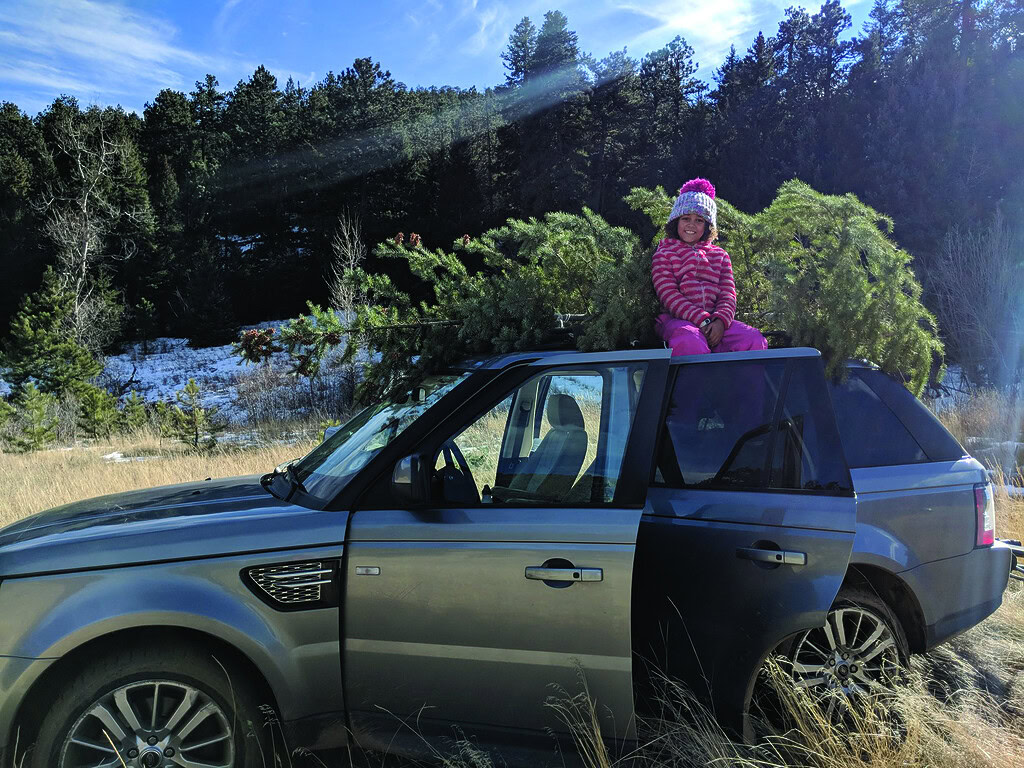
Deep in the roots of ancient Roman and Egyptian history are tales of evergreens being used for decoration. Since the 1800s, candlelit trees have been a symbol of the holiday season in the U.S., drawing inspiration from German tradition. Electric lights eventually replaced the wax and flame of olden days for a safer celebration.
The U.S. Forest Tree Program began in the 1940s and serves two purposes — providing families with a true Christmas tree and conserving forest land. Permits allow for the removal of trees to be placed and adorned in homes all across the country, and money collected from permit sales goes directly back to the Forest Service for continued conservation efforts. The 2024 U.S. Capitol Christmas tree comes from the Tongass National Forest in southeast Alaska.
In Colorado, the U.S. Forest Service allows cutting as a tool to manage the forest. Chopping down a yearly tree has become a tradition for many families, mine included. Make a day of your cutting adventure with good food and merriment.
Here’s where and how to cut your own Christmas tree in a Colorado national forest.
Choose a location
There are 11 national forests in Colorado covering 14.5 million acres, but not all allow Christmas tree cutting. Head to the National Forest page to search for your desired location. The locations closest to Boulder County include Arapaho and Roosevelt National Forest and Pike National Forest.
Grab a permit
For the 2024-2025 cutting season, permits go on sale Friday, Dec. 8. Cost ranges from $10 to $25 per tree, depending on location, with a maximum of five tree permits for the season.
The most convenient way to grab a permit is online at recreation.gov, especially for weekend cutting at the more popular locations, including Buffalo Creek, and popular times (especially the Thanksgiving holiday weekend). Weekdays tend to be less crowded and more peaceful.
Some locations, such as Fairplay, allow permit purchasing onsite at a National Forest Service ranger district office, but online buying can save time and hassle. Most locations check permits as you enter or exit, so don’t forget to print the permit and bring it along.
In Colorado, fourth graders can get a free tree permit: Pick them up at any U.S. Forest Service District office or purchase them online for a small fee through the Every Kid Outdoors program. (Read about other perks for Colorado’s fourth graders: bit.ly/4thGradeCO.)
Be safe and prepared
Check the current weather conditions for your cutting area, including the future forecast. Colorado conditions change quickly and often.
Most locations are on mountain roads that may or may not be paved the whole way. Cell reception is not reliable, and four-wheel drive is essential. Having weight in the back of the vehicle can help with traction; tire chains are even better. Gates on seasonal forest service roads close Dec. 8, so be prepared for a longer trek.
Remember that the sun also sets earlier in the mountains. Head up in the morning to avoid getting stuck after dark.
Be sure to read the federal cutting rules including the distance of the tree from the road, tree trunk size, etc.
Pack the essentials

• Permit
• Map of the cutting area
• Saw (like a bow saw)
• Tarp
• Rope
• Ice scraper
• Shovel
• Extra warm clothes (hats, gloves, socks, blanket)
• Emergency kit: first-aid, food, water and jumper cables
• Traction (snowshoes, spikes, skis)
Visit the Know Before You Go page from the U.S. Forest Service for more information.
Don’t forget the trimmings
Make your forest trek even cozier with these non-essential supplies:
• Hot cocoa or other warm beverages
• Soup, chili and warm food
• Camp chairs
• Sled for post-tree-cutting fun, tired kids or to pull your tree back to the car

Other tree-cutting opportunities
• Golden Gate Canyon hosts a yearly lottery for tree cutting on a specific date in December. The 2024 lottery closed Nov. 15, but be sure to put it on your calendar for next year: bit.lyGoldenGateTreesBW.
• Cal-Wood Education Center in Jamestown is hosting its tree harvest fundraiser Dec. 7 from 10 a.m. to 1 p.m. with a minimum $300 donation per family. The festivities include lunch and cookie decorating at the Calvert Lodge.
